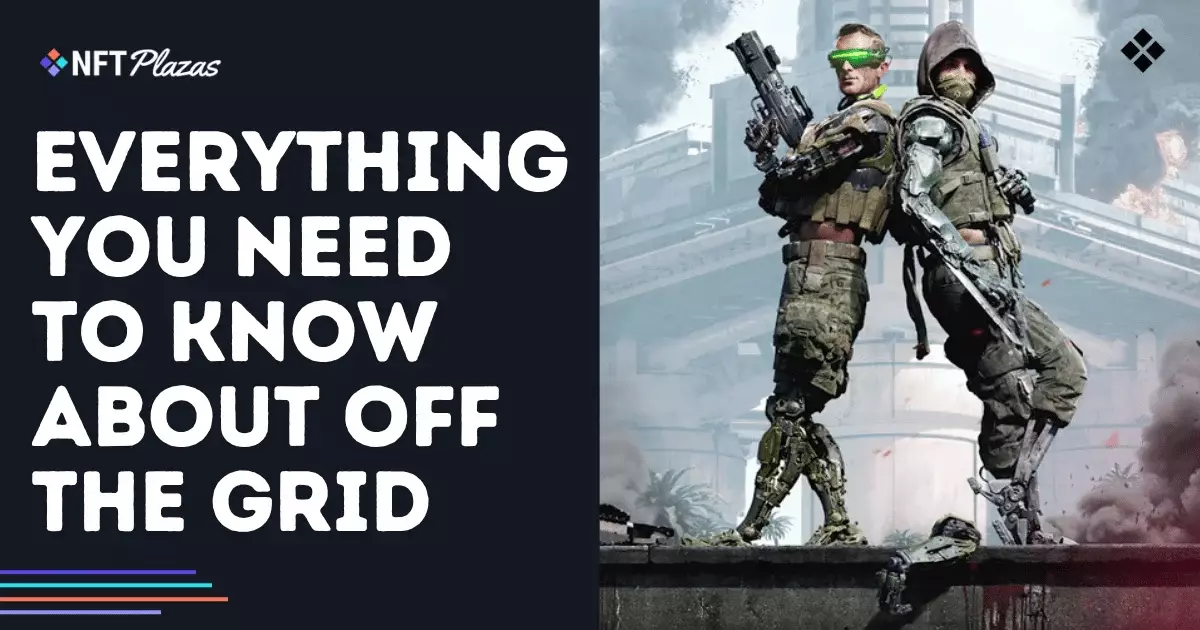In the crowded universe of battle royale games, innovations are often superficial, designed more to impress than to deliver lasting value. Off The Grid attempts to carve a niche by merging familiar gameplay with cyberpunk aesthetics and—most notably—cryptocurrency and NFTs. Yet, beneath the shiny neon veneer and buzzwords lies a game struggling to deliver a coherent, balanced experience. The developers have positioned this title as a revolution, but its core mechanics reveal merely a veneer of novelty. It’s an example of how industry trends—blockchain integration, cyber-advancements, and micro-economies—are often misused to mask fundamental design flaws or a lack of genuine innovation.
The game’s narrative, crafted by the visionary Neill Blomkamp and Richard K. Morgan, is aspirational yet shallow in execution. While the setting—Teardrop Island, a dystopian cyberpunk landscape—is visually compelling, it attempts to cover the game’s deeper issues with style rather than substance. These high-concept worlds can attract initial curiosity, but they don’t substitute for engaging, well-balanced gameplay. The theme is derivative of other cybernetically enhanced worlds, rushing into hype rather than innovation, and the game’s actual mechanics reveal a muddled understanding of pace, fairness, and player progression.
The Flawed Core: Gameplay Balance and Technical Shortcomings
One of the biggest problems with Off The Grid is its unstable foundation. The game’s mechanics, while ambitious, often feel unrefined. Weapon balancing appears arbitrary, with overpowered options skewing matchups and undermining the competitive integrity. This is compounded by cyberlimb abilities that, while creative, sometimes grant unfair advantages—certain mobility tools or offensive cyber-limbs can create a disproportionate impact, especially when combined with overpowered weapons.
Moreover, the technical execution leaves much to be desired. Built on Unreal Engine 5, the game visuals deliver a cyberpunk aesthetic—neon-lit cityscapes, futuristic weaponry, and character models—yet the performance inconsistencies undercut the immersive experience. Mid-range systems are plagued by frame drops and lag, diminishing even the most promising visual elements. These performance issues are emblematic of a rushed early-access release that prioritizes style over substance, which risks alienating the core audience that demands stability and polished gameplay.
Additionally, the matchmaker algorithms frequently produce unbalanced teams, a glaring flaw that can frustrate solo players or newcomers. They often find themselves pitted against squads with coordinated strategies, further discouraging engagement and muddying the game’s overall appeal. This imbalance in competitive fairness hints at deeper design neglect rather than a technical oversight—it signifies a lack of comprehensive player experience testing.
The Blockchain Dilemma: Revolution or Distraction?
No discussion of Off The Grid is complete without its controversial blockchain and NFT elements. This feature has sparked debate, revealing much about industry trends falling prey to hype rather than genuine utility. The idea that players can own, trade, and monetize in-game assets via NFTs and GUNZ tokens is intriguing—at face value. However, the execution feels superficial and often a distraction from core gameplay progression.
The optional nature of blockchain features is a welcome acknowledgment of their controversial standing, but this abdicates responsibility. When the blockchain becomes intertwined with gameplay—through the GUNZ marketplace, NFT skins, or node validation systems—it risks tainting the gaming experience by emphasizing speculation over fun. The long-term economic sustainability of this system is questionable; market volatility and speculative behaviors threaten to destabilize the player-driven economy, turning what should be a game into a quasi-investment scheme.
Furthermore, integration with blockchain technology introduces an additional layer of complexity—wallet management, NFT gas fees, and marketplace volatility—alienating players who just want to enjoy a straightforward shooter experience. Instead of blending blockchain seamlessly, it often feels tacked on, and the onus placed on players to navigate this labyrinth of digital ownership adds unnecessary friction. It divides the community into crypto-curious and traditional gamers, without convincingly demonstrating the value of digital ownership beyond speculative play.
The Reality of Long-Term Viability and Player Trust
Despite promising early impressions, the shadow of skepticism looms large over Off The Grid. Developers face the difficult task of balancing innovation with fairness, stability, and community trust. The current iteration, riddled with cheating issues—particularly from hardware mods like Cronus—exposes vulnerabilities that cannot be ignored. Cheaters undermine the competitive integrity, discouraging genuine players from participating or investing time.
On the economic front, the game’s reliance on NFTs and cryptocurrency remains precarious. If the hype wanes or external market forces shift, the in-game assets’ value could plummet, leaving players who invested in NFTs or crypto tokens with losses rather than benefits. This creates a fickle player base, wary of investing deeply into a system that might collapse under its own speculative weight.
Developer emphasis on engaging “elite” players, often sidelining casual or new users, fosters a sense of elitism that contradicts the accessible, inclusive promises initially made. The steep learning curve, combined with the game’s technical issues and balance problems, risks disillusioning the wider audience. For Off The Grid to truly evolve from a promising experiment into a reliable platform, it must prioritize core gameplay integrity, fair matchmaking, and robust anti-cheat measures above fleeting blockchain trends. Until then, it remains more spectacle than substance—an ambitious, but flawed, testament to where the industry is heading when style outpaces substance.

